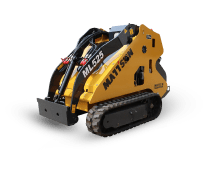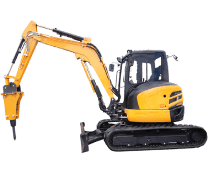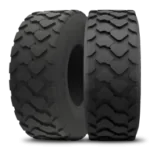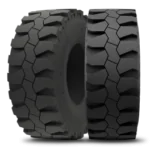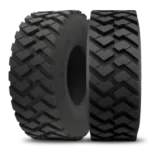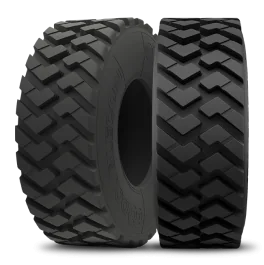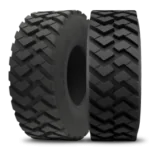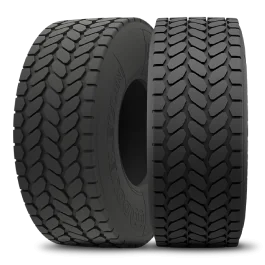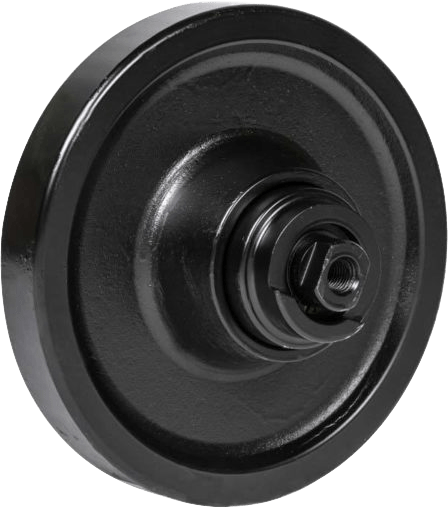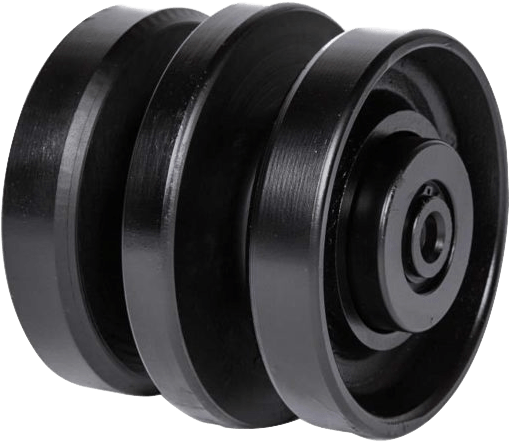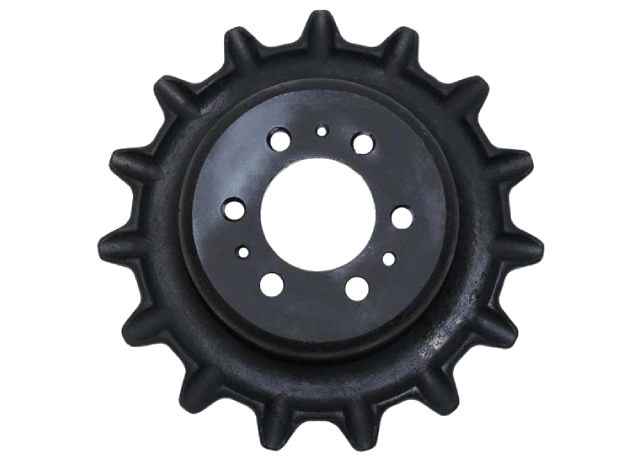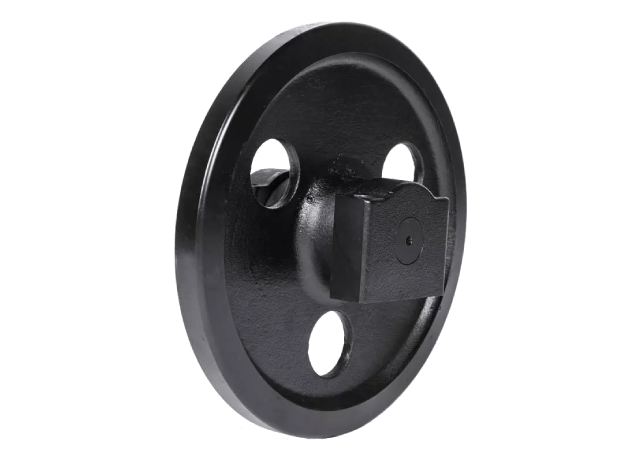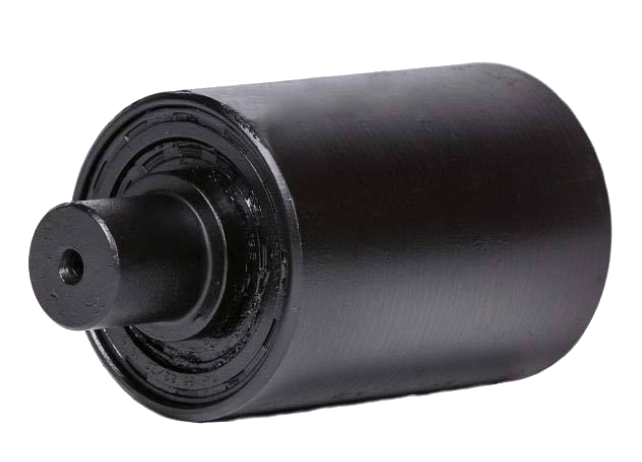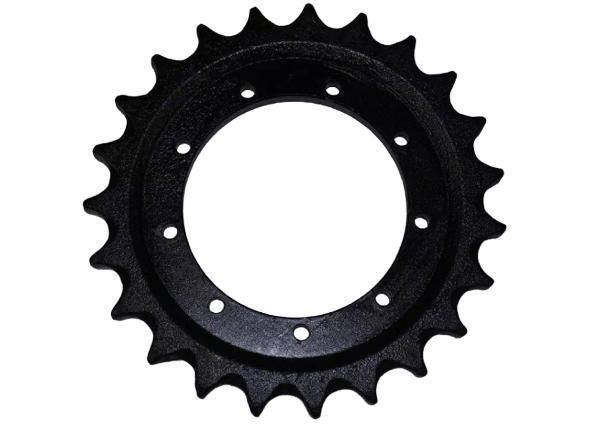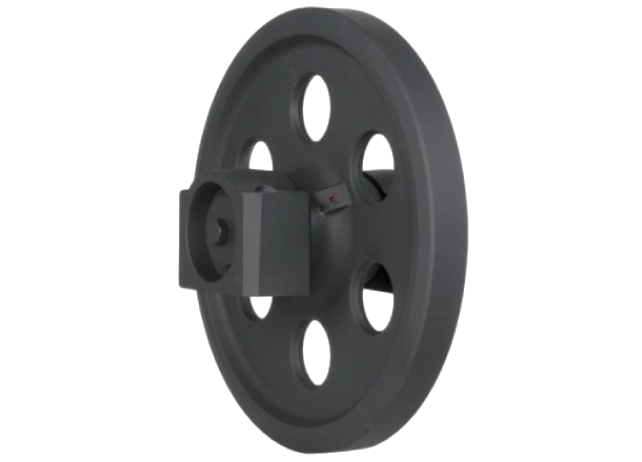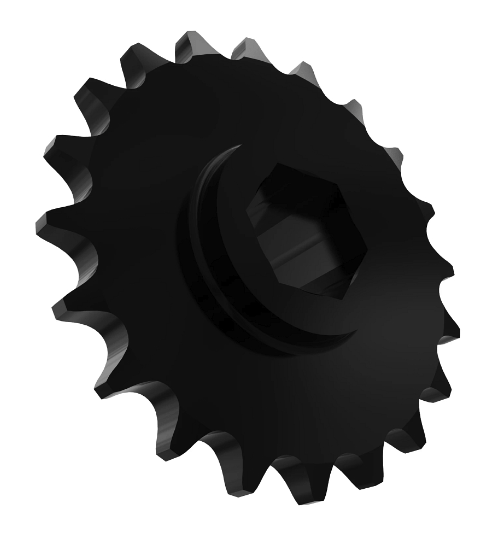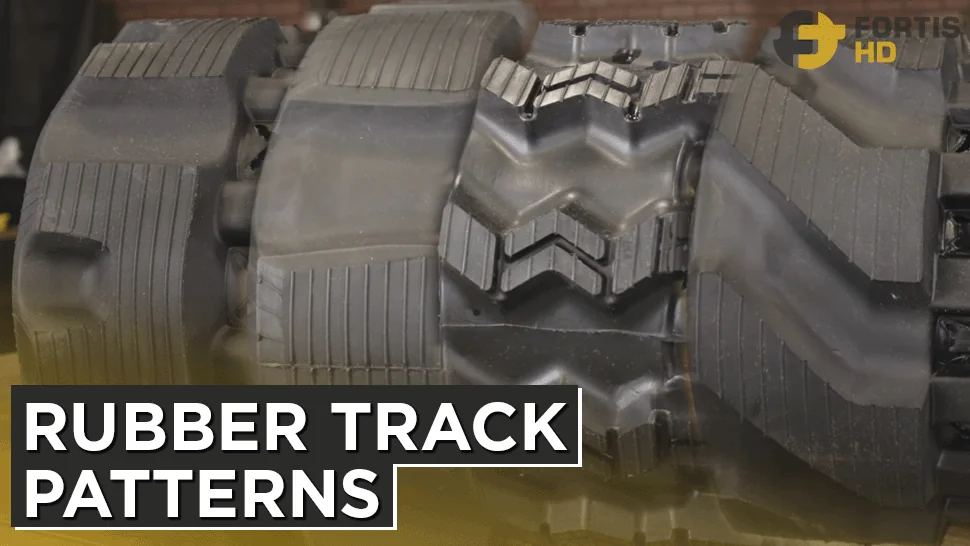We all know in a sort of ‘’recipe way’’ what type of rubber track patterns to use according to the equipment and ground condition.
Let’s get a bit nerdy and consider the interaction between the block, C, V, and zig zag tread patterns on different terrains to understand the reasons behind each tread design and its intended uses.
In a summarized video version of this post, our heavy equipment parts expert, Josh Daviduke, explains the most common tread patterns
Table of Content
The Interaction Between Rubber Tracks and the Ground
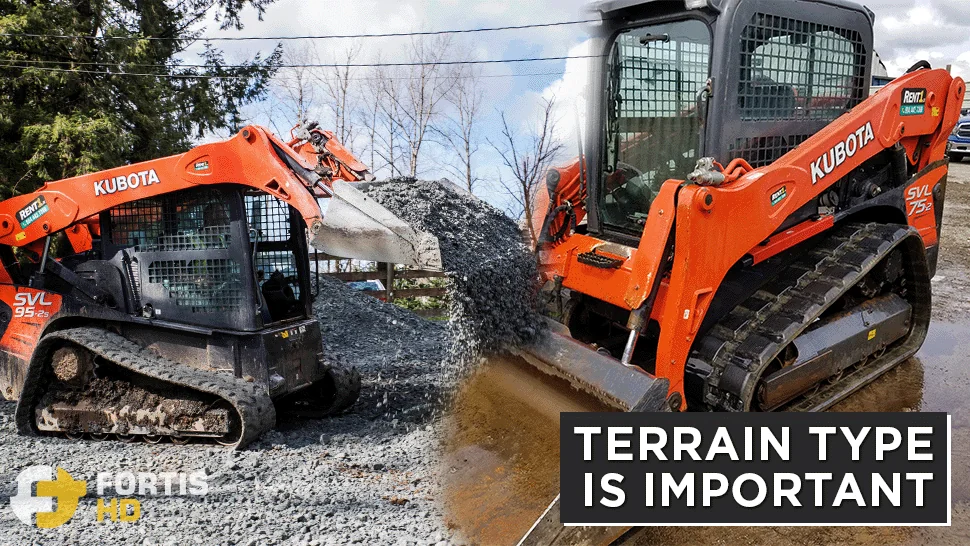
In the case of on-road applications, friction is the main interaction of rubber tracks with the ground.
Friction is directly proportional to the coefficient of friction (μ) and how hard the materials are pressed together (normal force). If one or both components increase, so does the friction.
The coefficient of friction depends on the roughness, which is different for every combination of materials. In the case of rubber and asphalt (or concrete), the friction coefficient equals one, which is a high value.
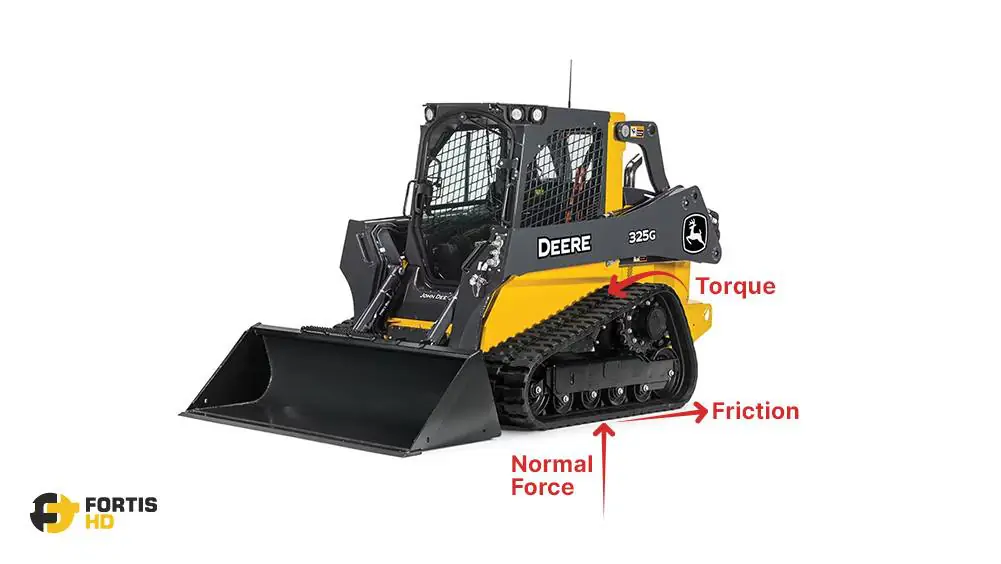
The vulcanized rubber of heavy-duty tracks deforms under the weight of the compact track loader or mini excavator, bonding with the asphalt’s rough surface and effectively transmitting the engine’s power to move the equipment.
Friction is less effective for off-road tasks, especially on soft ground. On loose terrain, the track lugs must dig to provide grip. More lugs digging the ground equals more traction.
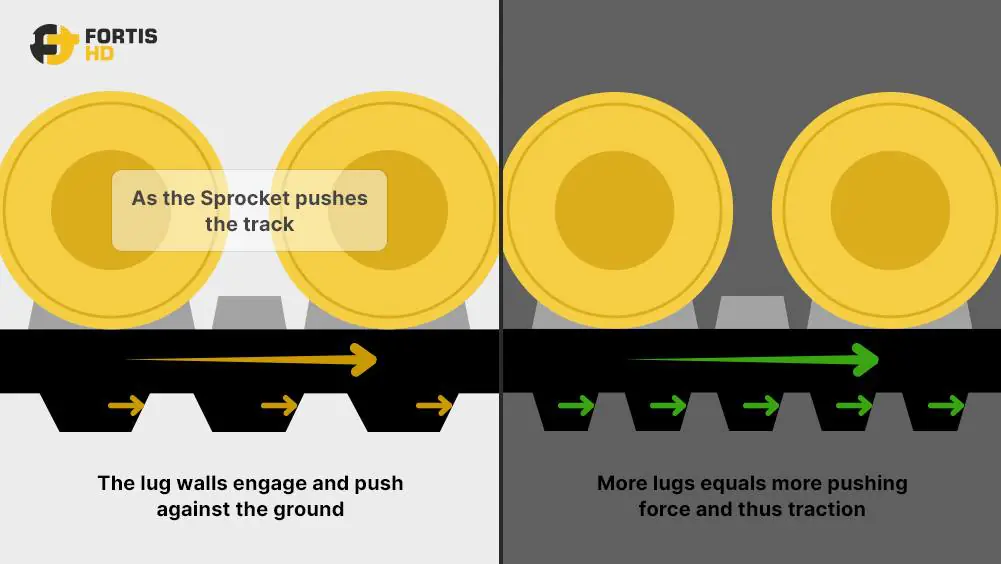
Things get even more challenging when water gets involved in the equation.
Water significantly reduces the coefficient of friction between the rubber and the ground, thus increasing the risk of slippage.
Skid steer tracks have grooves or voids to divert water, ice, or mud off the contact area to maintain friction and prevent material buildup, known as the self-cleaning feature.
With all of the above in mind, let’s see the suitable application of some of the most common rubber track tread patterns: Block, C-lug, V, and zig zag.
Block Tread Pattern
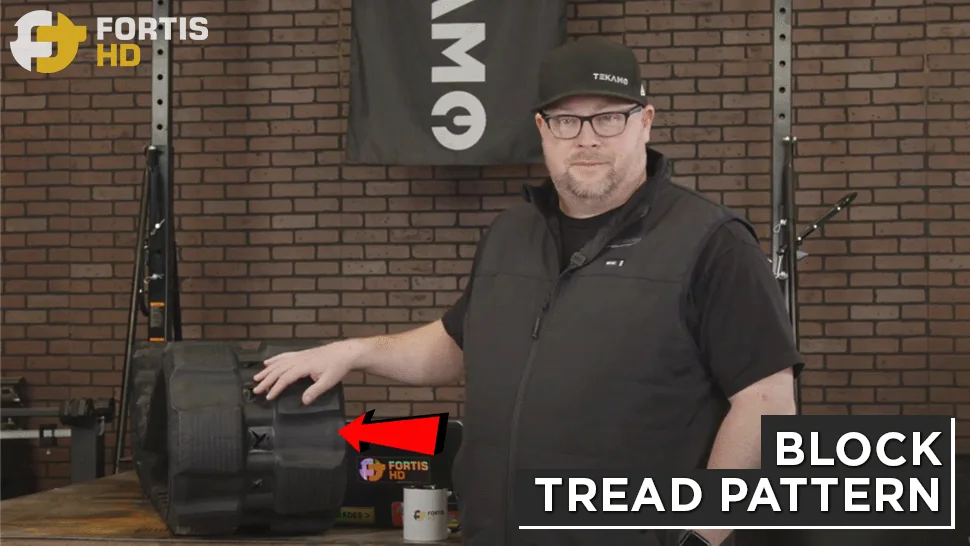
Tracks with a block pattern are excellent in pretty much anything. They are general-purpose tracks and can come as standard with your compact loader.
The big contact area provides superior traction when working on asphalt or concrete.
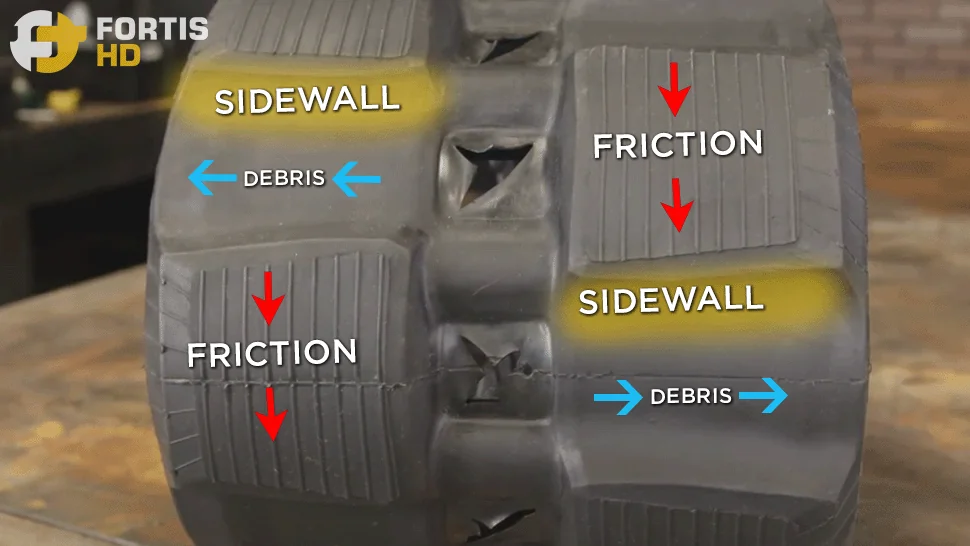
The block pattern is also good for working on mud. The lugs’s sidewalls grip the muddy ground to deliver traction, and their shallow angle provides moderate self-cleaning to prevent material buildup in the undercarriage and have enough grip for the next turn.
The staggered block tread distances on Fortis rubber tracks guarantee an even weight distribution, minimizing vibration and bouncing for a smooth ride.
C Tread Pattern
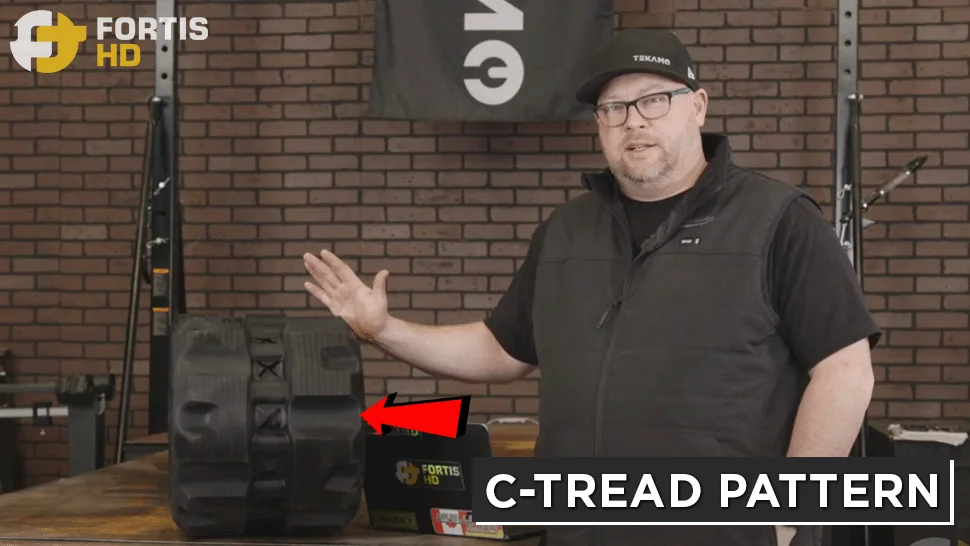
The C pattern, aka H tread pattern, resembles the block pattern with extra voids, giving the lugs a C shape.
Rubber tracks with a C pattern are the most common type for mini excavators and skid steers, and they are what you usually get when purchasing these heavy equipment.
They are a multi-purpose track. Work for mud, clay, snow, rock, and hard surfaces.
The extra voids provide more sidewall grip edges and, thus, more traction on soft ground than the block pattern without sacrificing friction area when working on paved surfaces.
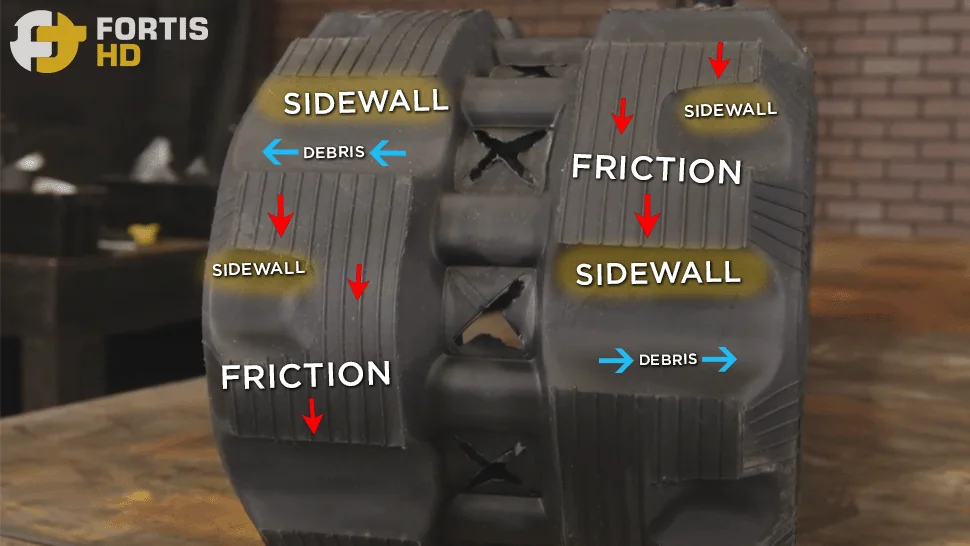
The C pattern also has a moderate self-cleaning capacity, and the lug distribution provides constant ground contact.
V Tread Pattern
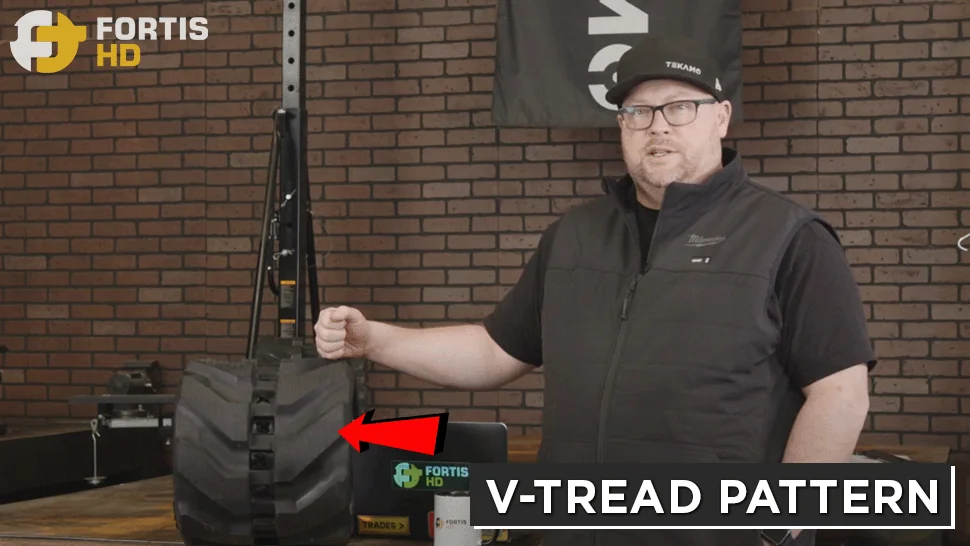
You’ll commonly find the V pattern on mini excavators, especially those working in agriculture or light tasks.
Mini excavators stay stationary while the arm, boom, and bucket do the job. They don’t need a lot of traction from their tracks.
The deep angle of the lugs on the V track applies forces of lesser magnitude than those with a block or C pattern. For agriculture applications, they provide traction without excessive ground disturbance.
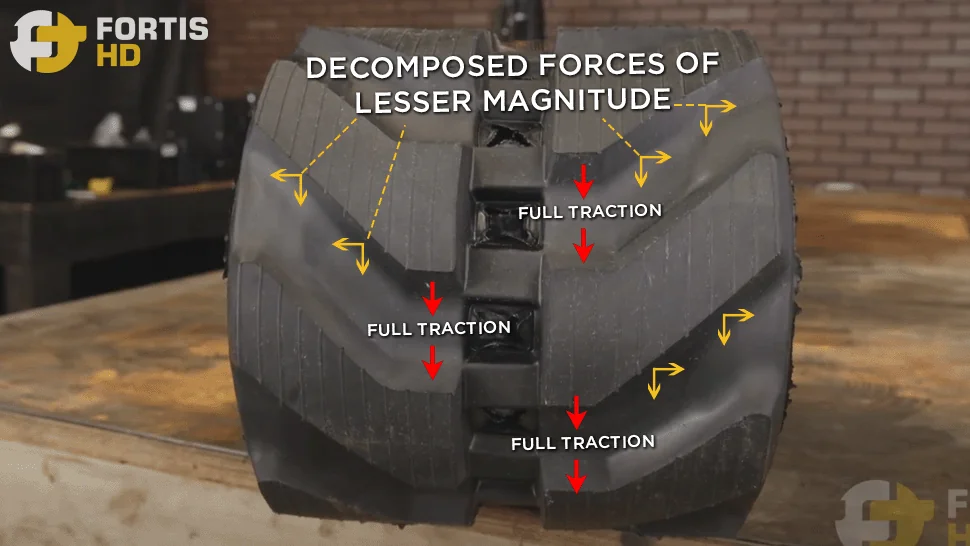
V pattern tracks are directional, meaning you must install them one way. For the lugs to paddle through muddy and loose ground (to keep a clean area for friction), the ‘’V’’ must go with the track motion, NOT against it.
Installing V tracks in the opposite direction will make them scoop material instead of paddling it out of the way.
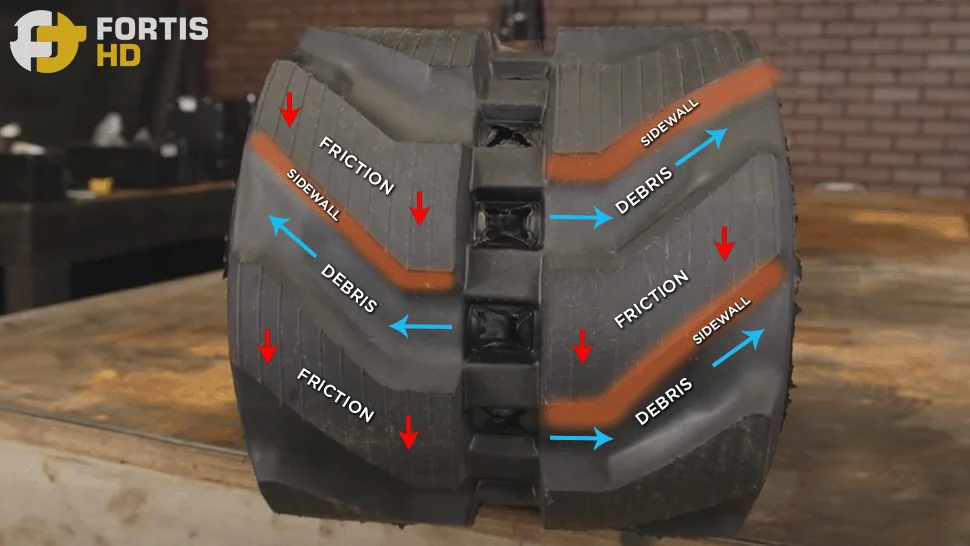
Zig zag Tread Pattern
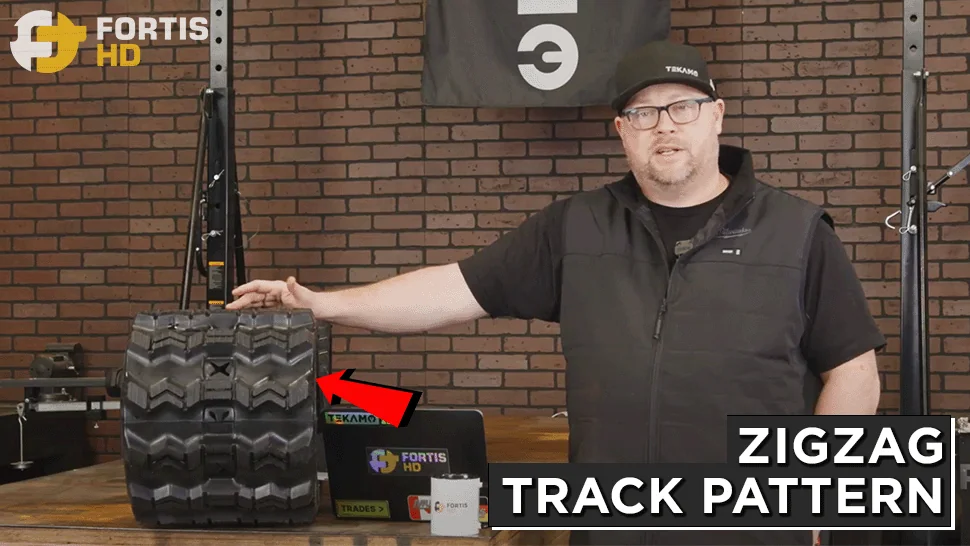
ZZ tracks are best for working in mud and snow removal. They are mainly fall, winter, and early spring tracks.
The zigzag pattern across the track maximizes the length of the sidewalls for more gripping edges and, thus, excellent traction on loose, slippery ground.
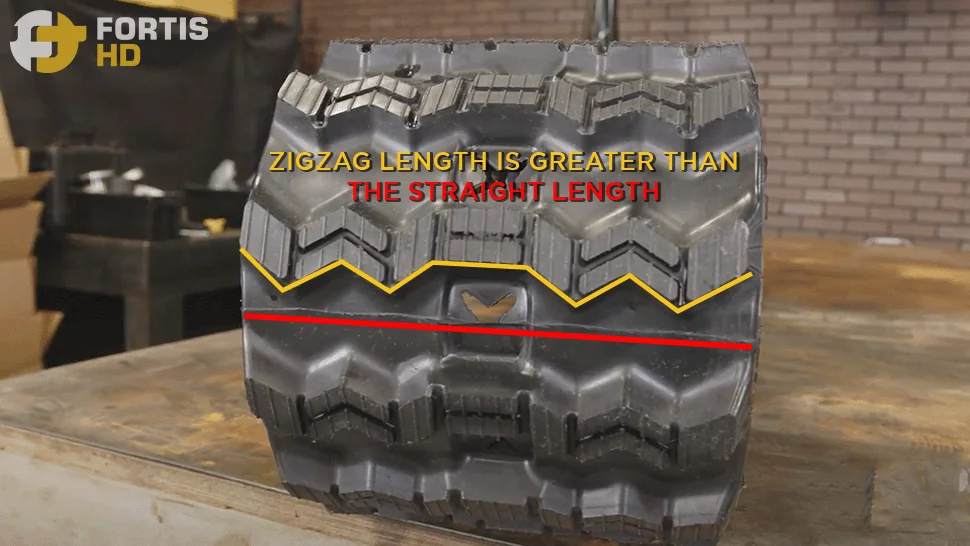
The lug angles and the grooves greatly divert snow, mud, and water, providing these tracks with a high self-cleaning ability for efficient friction.
Like the V pattern, zig zag tracks are directional.
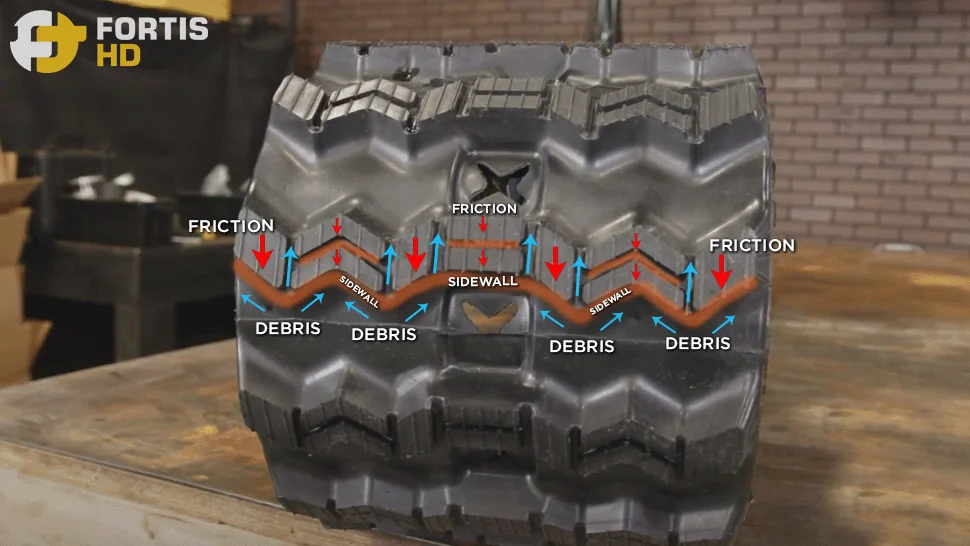
The Tekamo HD website has tutorial videos on how to put these tracks on and off your compact track loader and mini excavator.
Why You Should Invest in Fortis HD Tracks
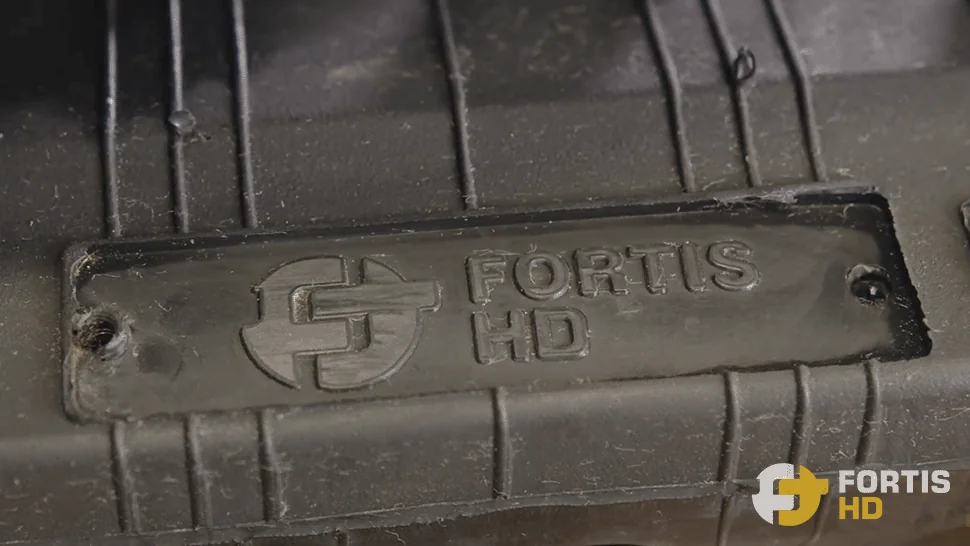
Besides the tread pattern, rubber tracks’ effectiveness depends on the quality of their components.
Fortis HD invests in high-quality raw materials to offer the best premium tracks in the industry. They handle as well and often longer than OEM, but you’ll pay only a fraction of the OEM price.
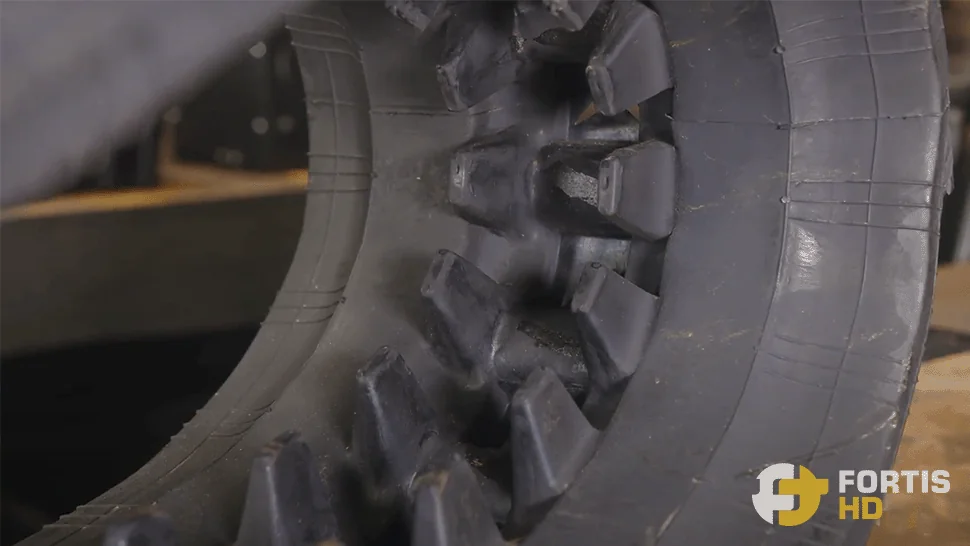
We use premium natural rubber with additives to produce a fine-tuned rubber compound for enhanced longevity. All our tracks are thicker than OEM, increasing their resistance to puncture, cut, and friction degradation.
In our article “Best Skid Steer Rubber Tracks to Reduce Downtime,” we examine the quality of the components of Fortis HD tracks and the manufacturing process to ensure maximum efficiency and durability.

At Fortis HD, we specialize in high-quality rubber tracks for CTLs and mini excavators, ensuring your machine stays operational with minimal downtime.
Check out our broad selection of premium tracks with the most common tread patterns.
Conclusion
Let’s recap what we learned so far.
Rubber tracks with a block and C tread pattern are general-purpose. Both perform well on concrete, asphalt, and mud. C-lug tracks have more gripping edges that let you work on clay, snow, and rocky ground. You’ll usually get both patterns with new compact track loaders. The C lug pattern is also common on mini excavators.
Zig zag tracks offer increased traction for skid steer loaders working on mud and snow, thanks to their multiple gripping edges. The large number of grooves also allows for high self-cleaning ability.
Lastly, the V tracks are suitable for mini excavators doing mild agriculture tasks.
In the track section of the Fortis HD website, you’ll find detailed info on other tread patterns and the inner components of our premium rubber tracks, plus a friendly user interface for purchasing your next replacement tracks.


